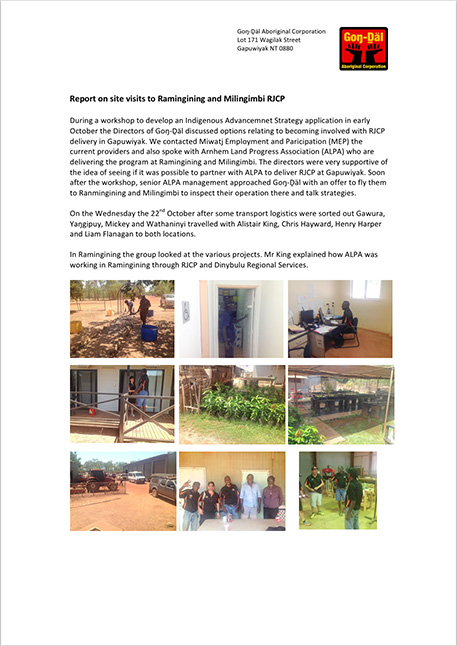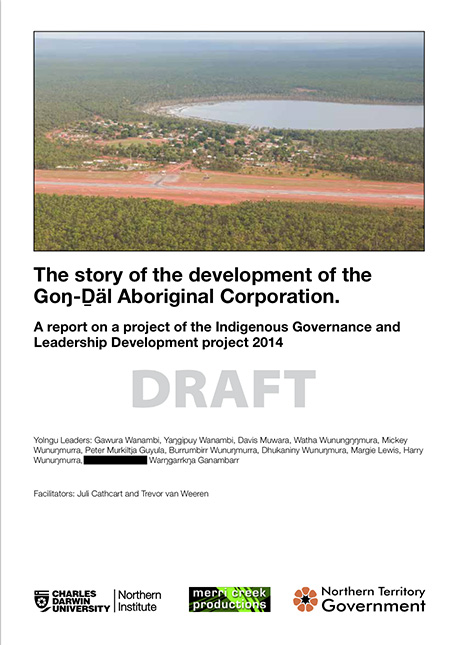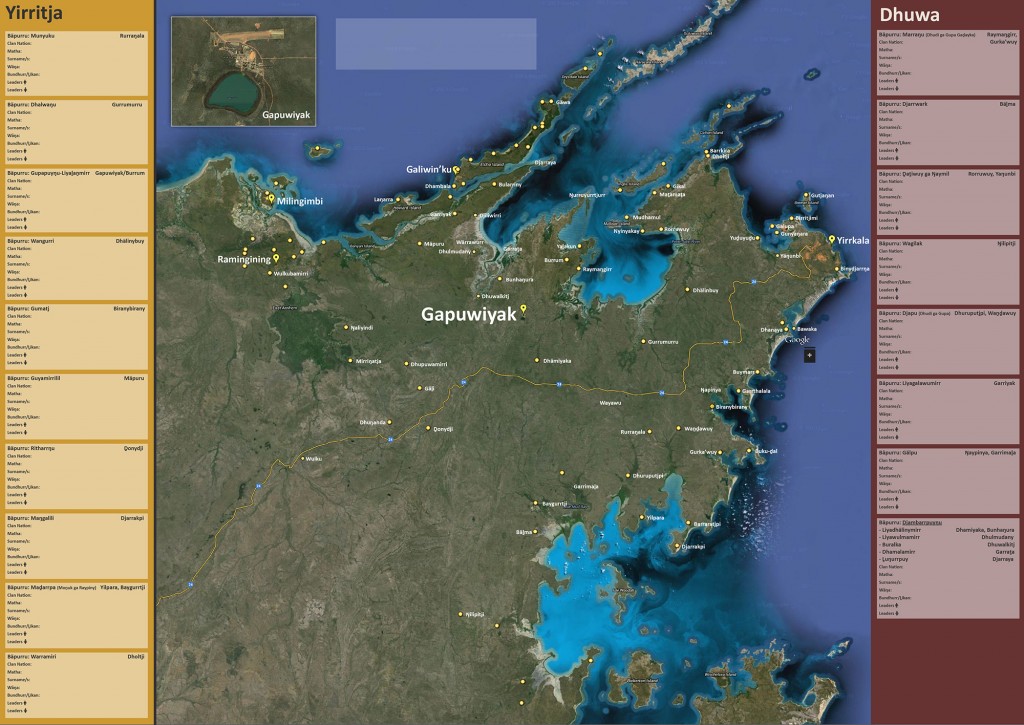Yolŋu Governance
Gawura Wanambi Recording 2 May 2014
This is how I saw Yolŋu governance and Yolŋu mägaya rom (peace law) when I saw old people doing it, when I came to this world. This is my story about yolngu mägaya rombuy, my story about Yolŋu governance, djaga rom.
Our people used to pay a lot of respect to each other. Everyone had one mind, one way of thinking and one vision, they were living in harmony. It was a good free life and people were hunting and gathering for each other. Gathering in ceremonies. At night they would tell stories and plan for the next day about what to do and where to go. They were all understanding each other in every way.
Teaching of everything was an important part governance for our old peoples way of living. Teaching of our culture and heritage, teaching our way of hunting, and gathering food The teaching of talking and planning, being taught about what is good and bad and what the cause of it is. Teaching about how to cut animals, like kangaroo, emu, turtle and fish. Teaching about all the names for the parts of the animals that are being cut. Teaching about the seasons and what it brings, the flowers that bloomed and what it meant.
Our old people were aware of the hard ways, such as a young man running away with a chosen or a promised woman that belonged to another man, family arguments, jealousy, trespass in ceremony and trouble from another clan group of people, they also were aware of the payback law in Makarrata. Sometimes bad things happened between them, but they solved the problem straight away, without leaving anything, our old people don’t leave any problems hidden in the Yolŋu Magaya rom. One thing that gets to them is when a group from another clan gets close to them and makes trouble.
Our old people did have the policing rom (law), court and justice rom, and penalty rom for the wrong doings. They had the discipline rom (raypirri). Our people didn’t have the law for domestic violence, or restraining order, just the law of not letting these bad things happen between families and between husbands and wives.
There was a law of giving a young person some discipline, one way was through talking and teaching and sometimes through giving a bit of a hiding to the child, not a very hard one, just a little one.
Nowadays we are not allowed to lay our hands on a child, even to our own children. If we do we end up in court or jail.
Some of our people that used to do wrong in the Yolŋu mägaya law are being put into ceremony to be disciplined. They are kept in these ceremonies, sometimes for more than a year. All this is Yolŋu mägaya rom, Yolŋu governance, Yolŋu policing rom, Yolŋu penalty rom for the wrong-doings. These rom or laws were happening and are still here, these rom were and ar every tough, strong and sharp, same as like the law from Balanda. Blanda law keeps changing all the time, but Yolŋu rom doesn’t change.
Our old people have been using this Yolŋu governance rom from the the start until Balanda law came. Some ways were forgotten; changes of ways, changing of the law, change of clothing, change of government, change of the law, made us forget our Yolŋu mägaya rom. This law is hidden somewhere here within us. We Yolŋu of this generation needs to awaken this Governance law that our old people have been using .
This law somehow got locked up in us. It disappeared, its not far from us, but we can bring it back and put it into action. It is our law, its not for Balanda so we Yolŋu, ourselves, need to do it.
We want the Balanda to see that we have governance law and its not new and has never changed. It has been with us from the time the first Yolŋu settled in this country.
We want Balanda governance to recognise our Yolngu governance. Whatever the rom or law the Balanda has and is using, we the Yolŋu have the same, governing, court, penalty and justice. What we want for Yolŋu and Balanda governance law to meet and recognise and understand each other, work together and share the dreams and visions together.
We are all humans, one god created us and gave us our ways and laws to live with and work with whether we are black, white, red or chinese, we are all humans created by one god. He gave everyone the knowledge and wisdom, he didn’t create anyone without knowledge and wisdom he wanted everyone to look after each other, care for each other, respect each other, so everyone could care for each other and respect each other.
Let us understand each other, Yolŋu and Balanda and working together. He created everyone to be level, not one side higher than another. People all around the world have governance, Yolŋu, Indian, Chinese, Kiwi, Eskimo, every race. They have their different governance law. It doesn’t matter if they do it in different ways, it all means one thing, it means the same, for all to look after each teaching, sharing, respecting, working and understanding together. So let us all Yolŋu and Balanda work together
Gawura Wanambi.


